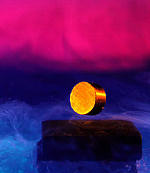 The changes adopted at the December 2006 Plenary of Wassenaar are now posted on the Wassenaar website, and we’ve started to go through them to look for things of interest. The first thing to catch our eye was to see that Wassenaar had moved into the 20th century and has discovered high temperature superconductors — materials which the scientific community discovered in the late 1980s.
The changes adopted at the December 2006 Plenary of Wassenaar are now posted on the Wassenaar website, and we’ve started to go through them to look for things of interest. The first thing to catch our eye was to see that Wassenaar had moved into the 20th century and has discovered high temperature superconductors — materials which the scientific community discovered in the late 1980s.
The revised list includes a new category 1.C.5.c which covers composite conductors consisting of one or more “superconductive” filaments which remain “superconductive” above 115 K (-158.16oC). Materials that exhibit superconductivity at temperatures over 90 K (-183°C) are traditionally considered high-temperature superconductors. This, of course, leads to the joke that no physicist can resist when writing about high-temperature superconductors that “high temperatures are relative.” Now you know why MIT is not a hotbed of stand-up comedy.
This is all very interesting, you say, but where’s the dual-use? Normally superconductivity is considered useful for magnetic effects (MRIs and floating trains and the like) and efficient energy transmission, none of which seem to have significant military application. However, this interesting article from RF Design Magazine describes at least one significant military application of HTS materials in military surveillance electronics. Short version: superconductors allow filters that will reject side-band frequencies without reducing frequency strength thereby vastly extending the range of surveillance receivers. Which is one of the reason why even high-temperature superconductors are cool.
(Rimshot. “Thank You. You’ve been great. Be sure to try the veal.”)
 Permalink
Permalink
Copyright © 2006 Clif Burns. All Rights Reserved.
(No republication, syndication or use permitted without my consent.)

 Posted by
Posted by  Category:
Category: 

